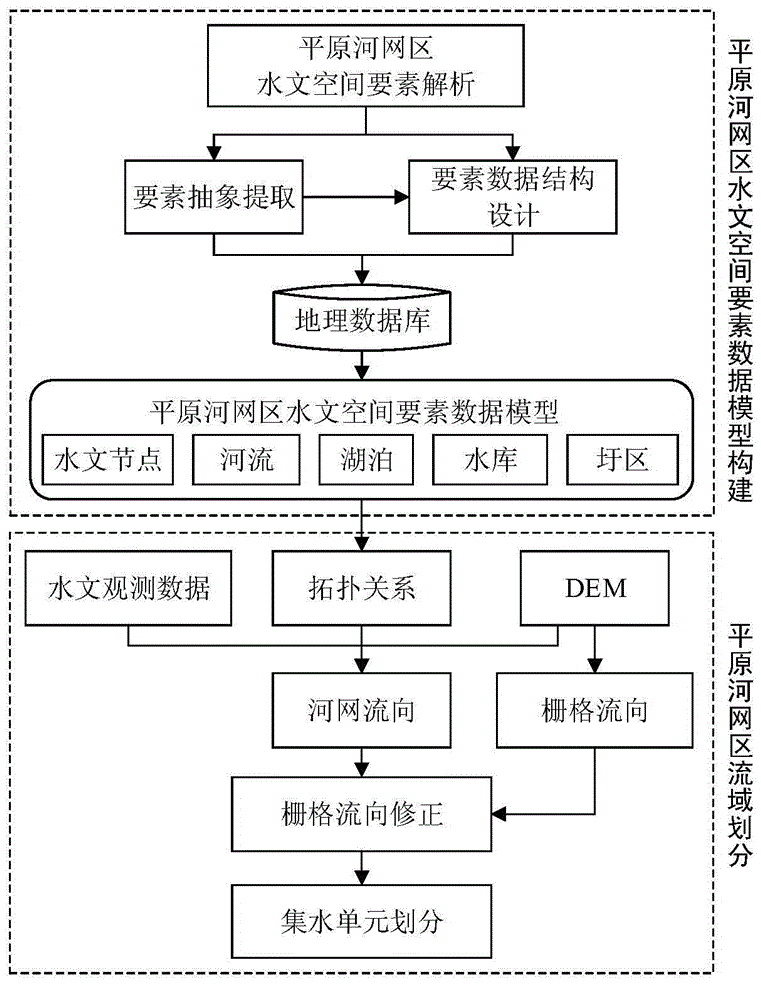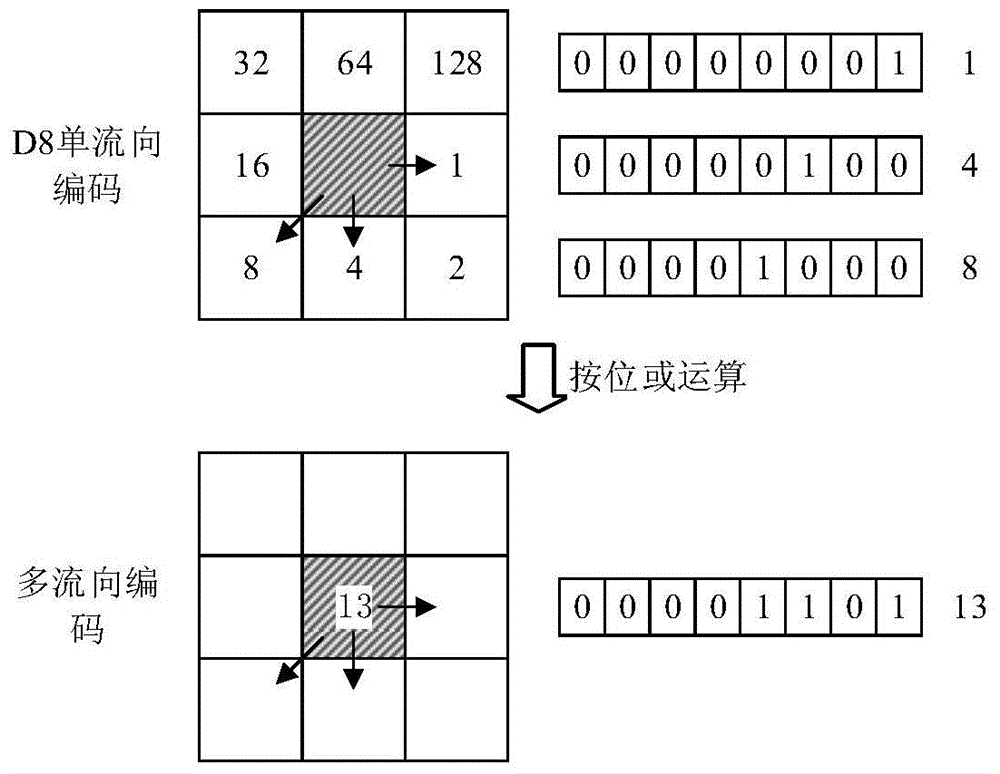Digital river-lake network based method for dividing water collection unit of river basin of plain river network region
A plain river network and network technology, which is applied in the field of hydrological analysis and simulation, can solve the problems that cannot reasonably express the network structure of plain river network areas, lakes, reservoirs, polders, etc.
- Summary
- Abstract
- Description
- Claims
- Application Information
AI Technical Summary
Problems solved by technology
Method used
Image
Examples
Embodiment
[0030] Combined with the accompanying drawings, the Lake West District (7722km 2 ) as an example, the present invention will be further described in detail.
[0031] (1) Digitize the river and lake network in the west of the lake. The river network, lakes, reservoirs, polders, drainage and irrigation stations, and hydrological stations were extracted respectively through the water system map and thematic map of hydraulic facilities in the west of the lake.
[0032] (2) Extract hydrological nodes. Use the FeatureVerticesToPoints tool of ArcGIS to extract hydrological nodes.
[0033] (3) Define the hydrological node type. Use hydrological data to manually define the types of river basin outlet nodes, lake inlet and outlet nodes, and reservoir inlet and outlet nodes, then automatically identify river source nodes and river channel connection nodes through spatial correlation, and finally supplement irrigation and drainage station nodes and hydrological station nodes.
[0034]...
PUM
 Login to View More
Login to View More Abstract
Description
Claims
Application Information
 Login to View More
Login to View More - R&D
- Intellectual Property
- Life Sciences
- Materials
- Tech Scout
- Unparalleled Data Quality
- Higher Quality Content
- 60% Fewer Hallucinations
Browse by: Latest US Patents, China's latest patents, Technical Efficacy Thesaurus, Application Domain, Technology Topic, Popular Technical Reports.
© 2025 PatSnap. All rights reserved.Legal|Privacy policy|Modern Slavery Act Transparency Statement|Sitemap|About US| Contact US: help@patsnap.com



